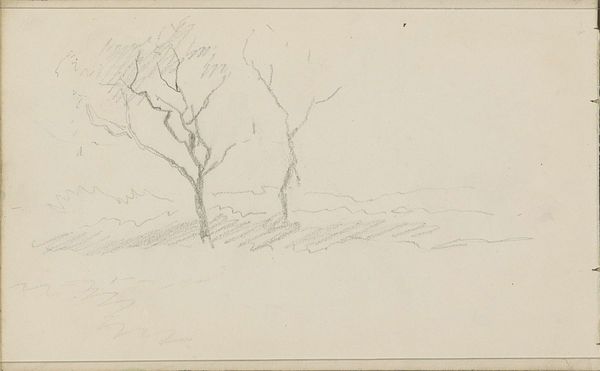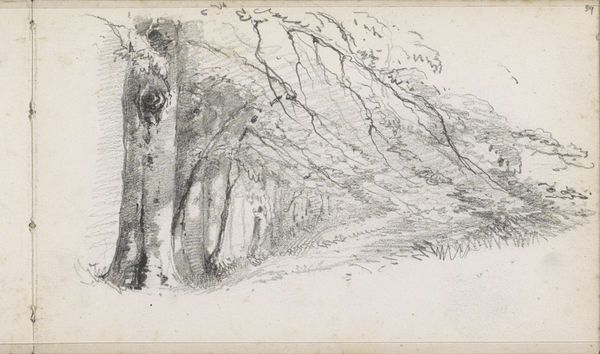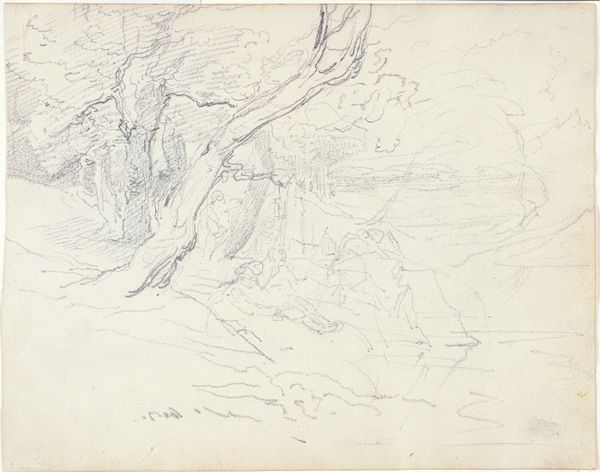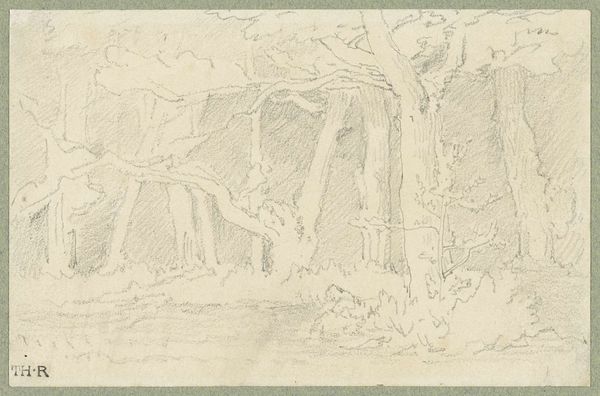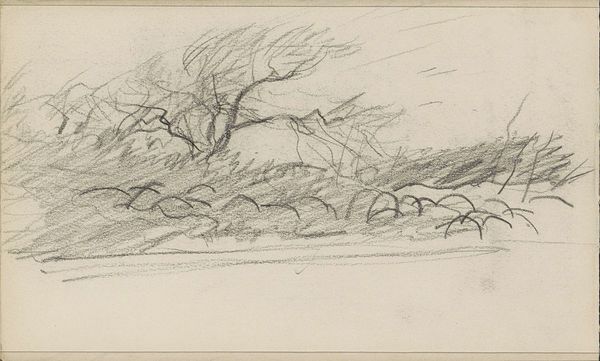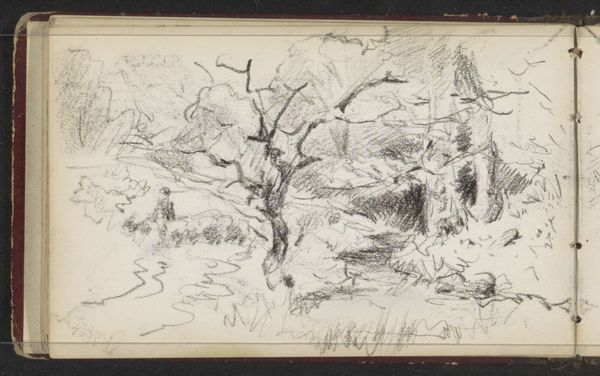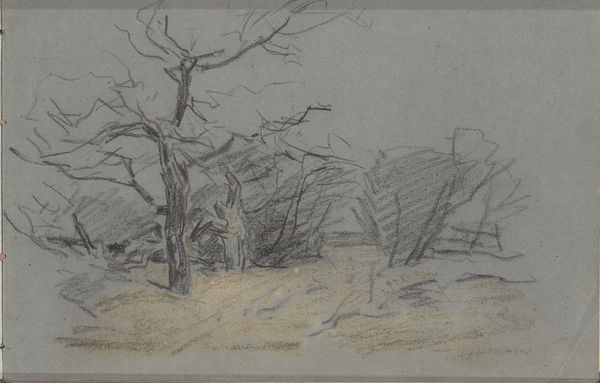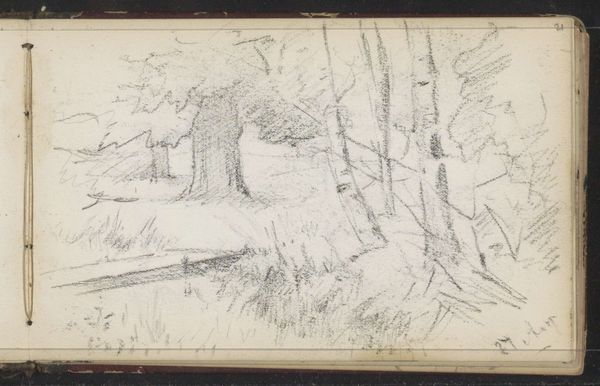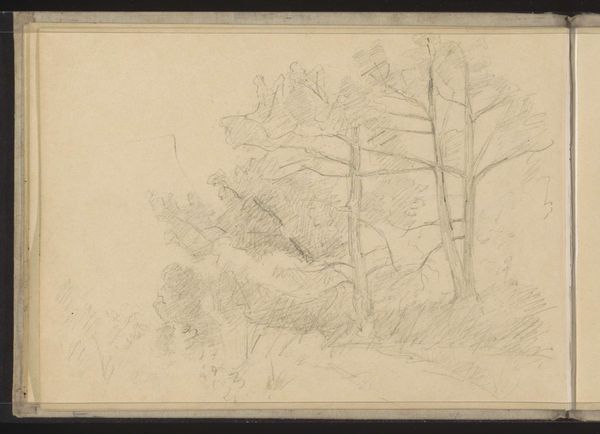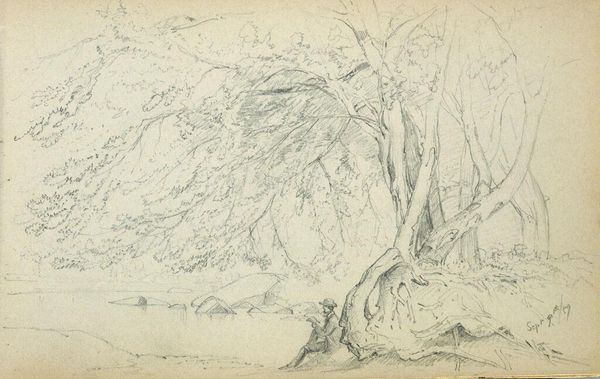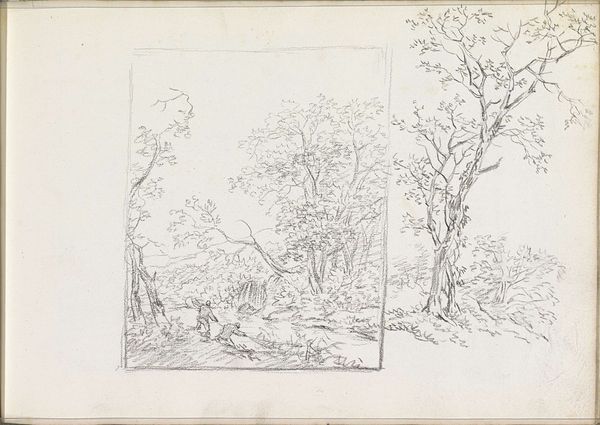
drawing, paper, pencil
#
drawing
#
landscape
#
paper
#
pencil
#
realism
Dimensions: height 184 mm, width 282 mm
Copyright: Rijks Museum: Open Domain
Curator: This delicate drawing by Willem Cornelis Rip, titled *Ruïne in de omstreken van Nijmegen*, was created in 1874 using pencil on paper. What are your first thoughts? Editor: Immediately, I am struck by a sense of quietude. It’s almost ethereal, this scene. The subtle gradations of pencil create a hazy atmosphere, suggesting a space lost in time. The ruin is more than just stone; it feels symbolic of fragility, doesn’t it? Curator: Indeed, ruins often carry a heavy symbolic weight. Within the context of the 19th century, landscape art gained increasing significance, representing not only places but ideas about national identity and the relationship between humanity and nature. This humble ruin can be read as a contemplation of historical continuity and change, the ephemeral nature of power, for example. Editor: Right, the selection of this kind of landscape suggests specific social values, in particular towards the understanding of progress and identity through a connection with a deep understanding of our interaction with the land. Rip’s realistic, careful depiction almost mourns its existence. It raises questions about what histories are privileged, whose stories get told, and whose disappear beneath the rubble. Who owned that structure? Who did it serve? Who decided its end? Curator: Very astute observations! These landscapes became platforms for conversations about power and belonging. Artists consciously selected and framed what they chose to depict, therefore also constructing national narratives, that is, a selective national memory and vision. Did these humble ruins perhaps speak of alternative memories that the Dutch citizenry also needed at this time? Editor: It's easy to miss the complex dialogue inherent in this drawing, so simple in its presentation. How the delicate touch of the artist manages to open into difficult debates and to prompt an ethics of representation and remembrance. That capacity makes art endlessly fascinating. Curator: It does! Thank you, as always, for shining a light on the socio-political implications interwoven into what initially appears a quiet drawing. Your lens reminds us that these images can, in fact, incite us into social activism and historical re-examination.
Comments
No comments
Be the first to comment and join the conversation on the ultimate creative platform.
